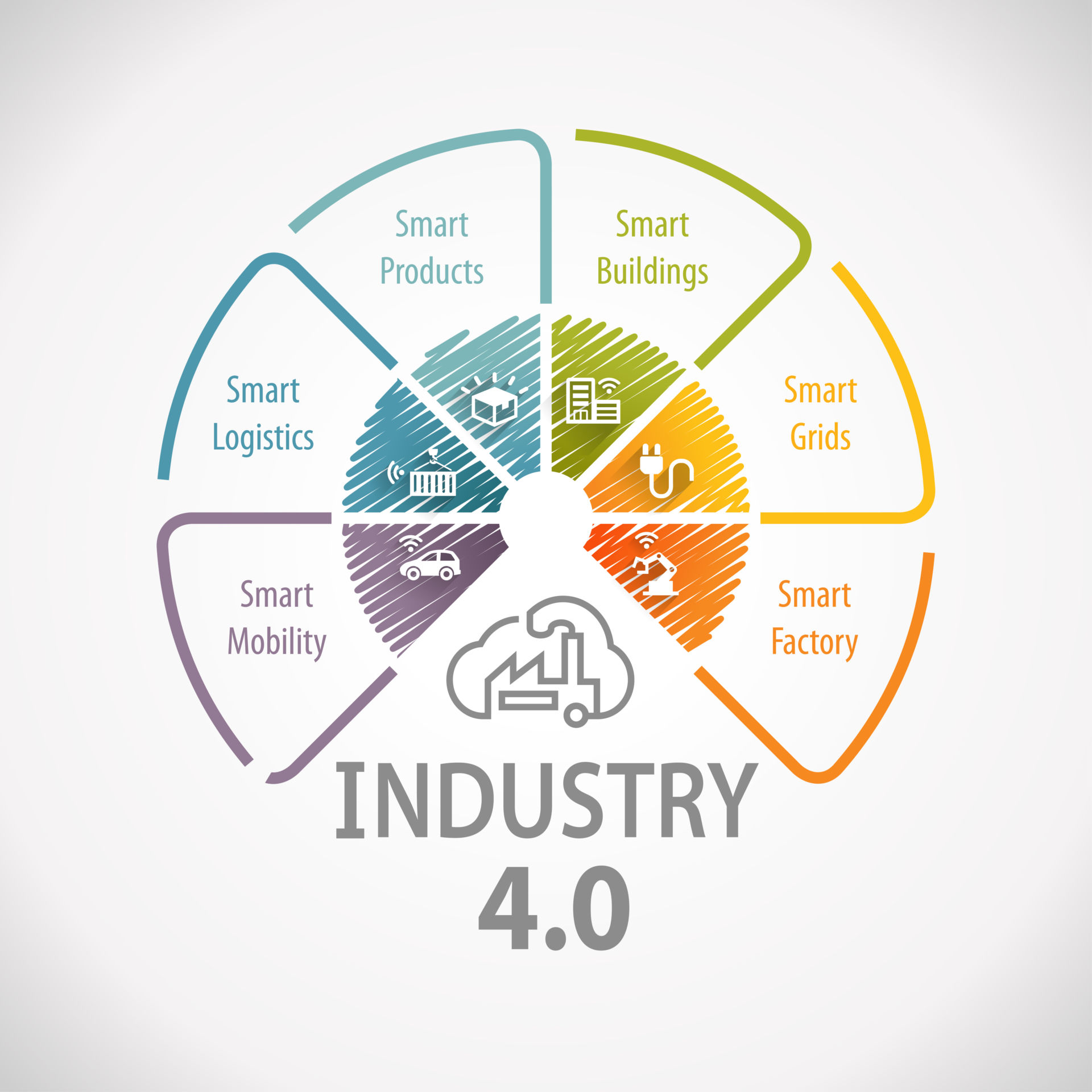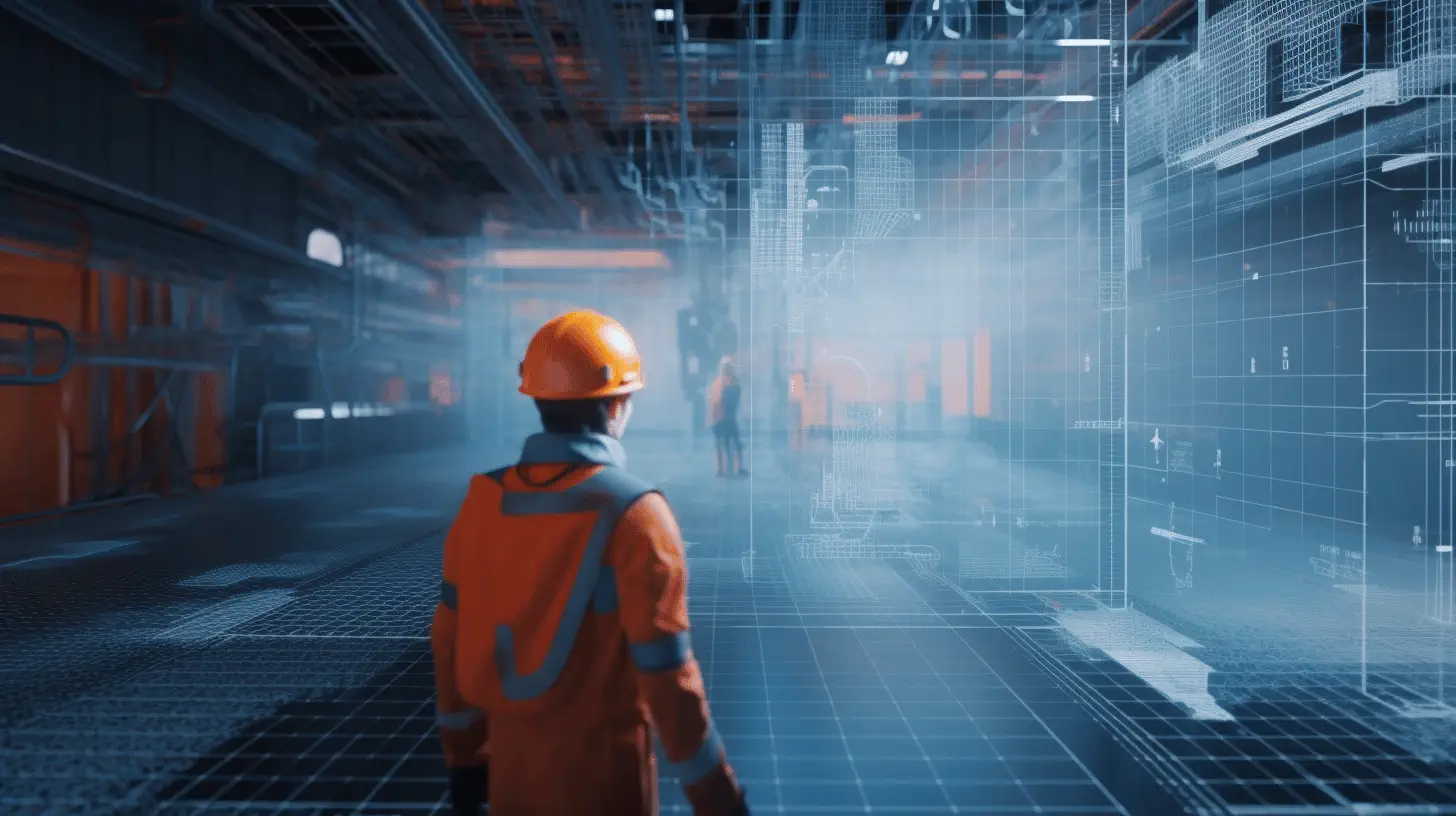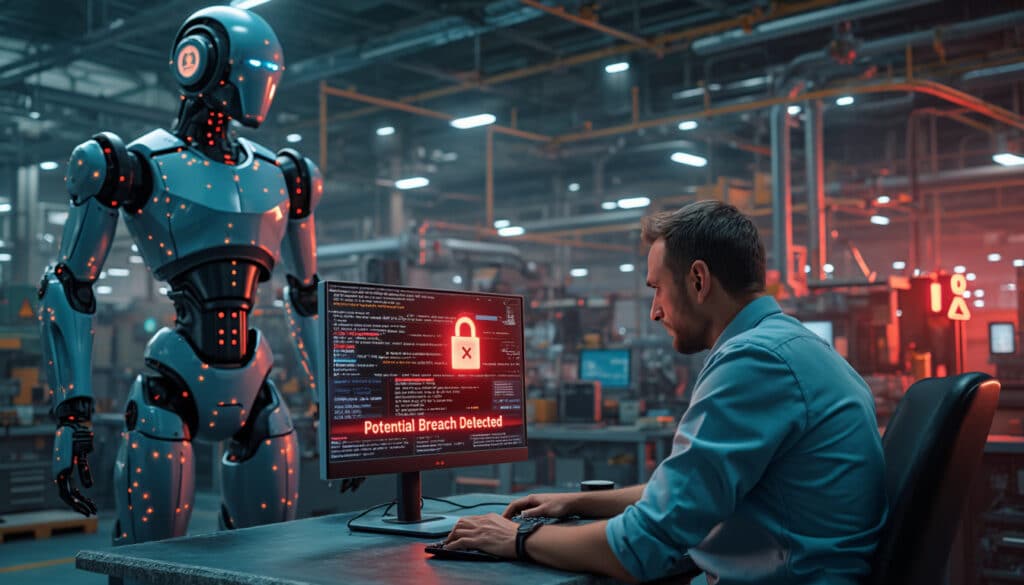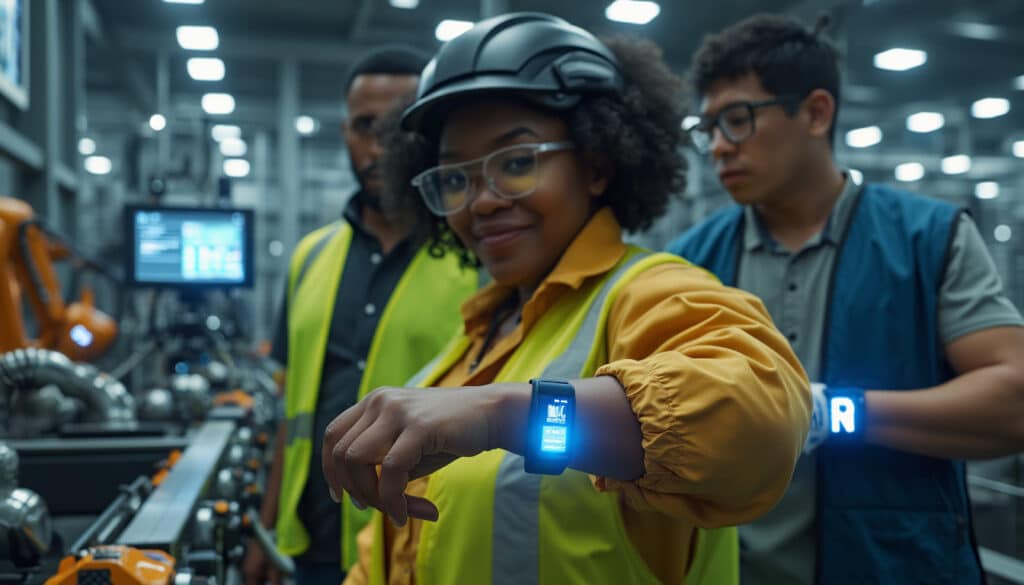
In the era of Industry 4.0, business processes are undergoing a major transformation with the introduction of new technologies such as the Internet of Things (IoT), cloud, and cyber-physical systems. This evolution leads to a significant increase in risks related to cybersecurity. It becomes imperative for manufacturers to adopt a holistic approach that integrates people, processes, and technologies to strengthen the protection of their infrastructures against increasingly sophisticated cyber threats.

As Industry 4.0 deeply transforms industrial processes through innovative technologies like the Internet of Things (IoT) and cyber-physical systems, it also poses considerable cybersecurity challenges. This second part examines the increased risks, comprehensive defense strategies, and key technologies necessary to effectively secure this new industrial era.
Table des matières
ToggleIncreased Risks in Industry 4.0
Use cases related to Industry 4.0, such as increased connectivity and automation of processes, raise the cyber risk affecting business processes. Factories of the future integrate new systems and technologies, such as cyber-physical systems and IoT devices, which are often vulnerable to sophisticated cyberattacks. Due to this increased complexity, a successful attack could completely paralyze operations or even cause physical damage.
A Comprehensive Approach to Cybersecurity
To protect themselves effectively, manufacturers must adopt a comprehensive and holistic approach to cybersecurity. This involves considering not only technologies but also people and processes. Cybersecurity in Industry 4.0 must be integrated from the earliest stages of design and requires a dedicated governance structure, as well as ongoing analysis and management of cyber risks.
Essential Technologies
The core technologies underlying Industry 4.0 include PLCs (Programmable Logic Controllers), SCADA (Supervisory Control and Data Acquisition), and M2M (Machine to Machine) systems. These tools, essential for controlling and managing industrial processes, are also prime targets for cybercriminals. Therefore, securing them is critical to prevent any disruptions to operations.
Technical Solutions
Advanced technical solutions, such as industrial firewalls, intrusion detection systems, and identity and access management platforms, play a crucial role in protecting industrial infrastructures. These technologies enable real-time monitoring of potential threats and allow for a rapid response in the event of an incident.
Digital Transformation and Its Security Challenges
Impact of IoT and Cloud
The massive integration of IoT and cloud in industrial environments exposes facilities to increasingly sophisticated cyberattacks. IoT devices, often numerous and diverse, can serve as entry points for cybercriminals. On the other hand, cloud services, while offering considerable benefits in terms of flexibility and cost, require heightened vigilance and enhanced security measures to protect sensitive data.
Monitoring and Artificial Intelligence
Continuous monitoring and the use of artificial intelligence (AI) are essential elements for improving cybersecurity in smart factories. AI allows for the detection of anomalies in operations and the prediction of potential threats before they materialize. This, combined with advanced monitoring systems, provides an additional layer of defense against targeted attacks.
Challenges to Overcome
Complexity of Industrial Systems
Industrial systems are increasingly complex and interconnected. Each new technology introduced into the production process adds a new layer of security challenges. This increased complexity requires specialized skills and dedicated resources to ensure effective protection against cyber threats.
Training and Awareness
Another crucial challenge is raising awareness and training employees. Human security breaches, such as phishing or accidental errors, remain common causes of cyber incidents. Therefore, it is essential to regularly train personnel on best practices in cybersecurity and to raise their awareness of potential risks.
- System Monitoring: Use of SCADA to control PLCs
- Digital Transformation: Integration of core technologies of Industry 4.0
- Process Protection: Adoption of a comprehensive approach involving people, processes, and technologies
- Risk Analysis: Governance structure to assess and manage cyber risks
- Artificial Intelligence: Application to improve operational efficiency and security
- Cyber-Physical Systems: Implementation to optimize industrial production
- Internet of Things (IoT): Use to connect equipment and optimize performance
- Cloud Computing: Adoption to facilitate data storage and access
- M2M Security: Protection of machine-to-machine communications against cyberattacks
- Operational Challenges: Identification and management of challenges related to cybersecurity in Industry 4.0
https://twitter.com/nextinpact/status/1834577921908089278





